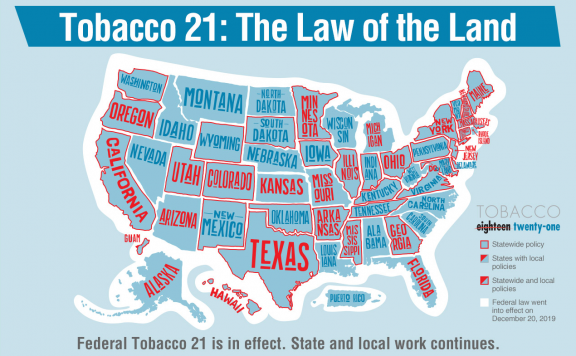The Cleveland Clinic, another of the world’s leading academic medical facilities, has jumped on the anti vaping bandwagon, spreading misinformation about nicotine’s health impacts.
For several years, the landscape of communication science appeared like this: respectable universities and public health institutes conducted solid research and informed users about the hazards they faced; Devious activist groups concocted serious health issues that ignorant and unethical reporters mindlessly repeated; ACSH and other science-based organizations countered the rubbish in the headlines.
Things have changed since then. Consumers are frequently misled by credible healthcare practitioners and other trustworthy institutions. There isn’t a better example than this latest Cleveland Clinic article: The Effects of Vaping or Smoking on Physical Activity:
Contrary to common opinion, vaping is not a safe substitute for smoking. Indeed, researchers claim that the spread of vaping “endangers five decades of advancement in the war against tobacco usage.”
The article is a mix of ambiguity, cherry-picked figures, as well as outright falsehoods. To keep our family-friendly reputation, we won’t use an eight-letter word for it. Let’s examine some specifics to see if we can aid Cleveland Clinic right the ship.
According to the Centers for Disease Control and Prevention (CDC), the overwhelming majority of vapes available in the United States contain nicotine, which has long been known to be a hazardous and addictive chemical.
In the absence of the harmful compounds found in tobacco smoke, nicotine is only a weak stimulant. This finding is shared by the clinic, which recommends nicotine-containing gum, nasal sprays, inhalers, lozenges, and patches, as smoking-cessation aids. Small quantities of nicotine cannot be “dangerous and addictive” when vaped, nor can they be “medicine” when supplied by large pharmaceutical corporations. These are mutually exclusive terms.
Vaping is becoming more popular, notably among young people and adolescents. According to research, vaping among youthful people has increased from 1% in 2011 to a stunning 21% in 2018.
When the most current figures from the CDC’s National Youth Tobacco Survey are included, the trend totally reverses—four additional years of data Cleveland Clinic overlooked. Today, fewer than 10% of youngsters vape, and the large majority are already smokers. This is also true for youths; they are smokers who do use vaping to assist them quit smoking. Indeed, vaping is more successful than quitting the medicines recommended by the Cleveland Clinic.
Tobacco use has both acute and long-term impacts on physical activity and exercise… Vaping, like smoking, can induce breathing problems and chest pain or tightness. (These are not the types of symptoms that would motivate you to run an extra lap or enhance your strength to do a couple extra sets inside the gym.)
I exercise weights and run sprints three times a week, and I smoke every day, but my gym efficiency is unaffected. I’m not the only one that feels this way. According to a study published in the journal Drug and Alcohol Dependence on May 2022:
By the age of 39, 36% of smokers aged 30 had switched to vaping part or all of the time. Higher relative vaping frequency was associated with four of the nine outcomes studied, including considerably more workout, more active engagement, [and] improved physical health… at age 39, even after controlling for earlier behaviors at age 30 [emphasis added].
Follow-up query for the Cleveland Clinic: if vaping impairs fitness levels, why do individuals exercise more after transitioning to electronic cigarettes? Maybe the rising body of research proving the advantages of vaping, particularly enhanced lung diseases can assist us in answering that question.
Nicotine is a highly addictive and hazardous substance. It is difficult to stop vaping and smoking. Some smokers may need to try several ways before finding one that fits them, and relapses are typical…
The second technique is as follows:
Attempt over-the-counter options such as nicotine patches, gum, or lozenges. You can also speak with your doctor concerning prescription nicotine in the form of an inhaler or a nasal spray.
So, to avoid this “dangerous and incredibly addictive substance,” the Cleveland Clinic recommends using the same dangerous and addictive chemical. The ridiculousness of the situation is not lost on anyone, not even the idiots who authored the piece.
This is not to argue that nicotine replacement treatment is completely ineffective. It works successfully for many ex-smokers, such as those who use e-cigarettes to diminish or remove their nicotine addiction. However, it is logically impossible to condemn a substance while also prescribing it to your patients.
It’s not unexpected that anti-tobacco organizations and journalists target vaping. Idiots and idiots frequently get the information wrong. But when the Cleveland Clinic, which describes itself as “the world’s first integrated worldwide health system,” repeats the Truth Initiative’s deceptive rhetoric, we have a major issue.
Public health organizations have done a lot to deter smokers from converting to vaping, which might actually cost them their lives. Whatever its intentions, the Cleveland Clinic is rejecting the evidence and putting countless patients in danger.
Of course, there have always been exceptions to the rule. The decades-long onslaught on saturated fat is arguably the clearest example of conventional medicine disseminating erroneous health advice to the public.







